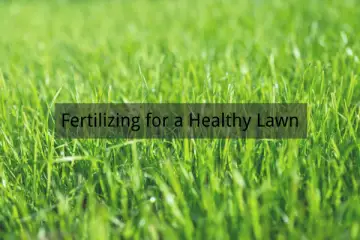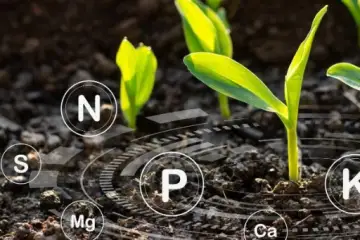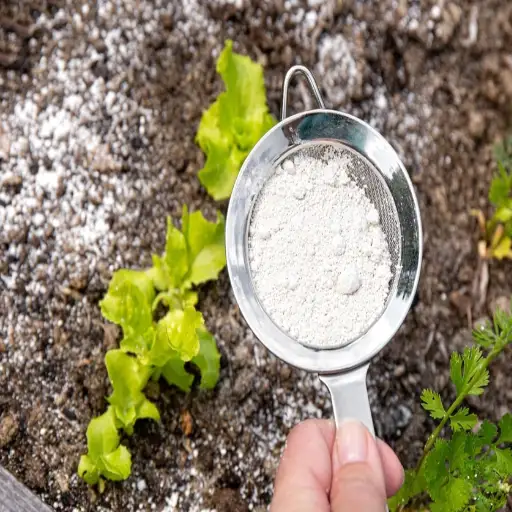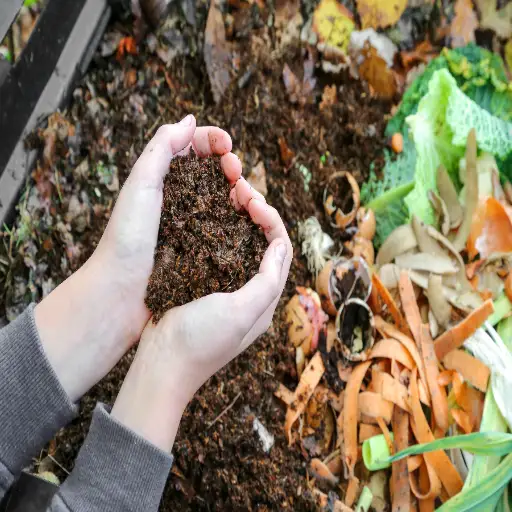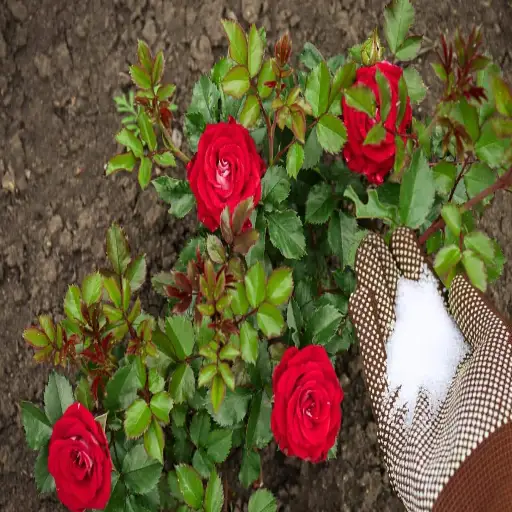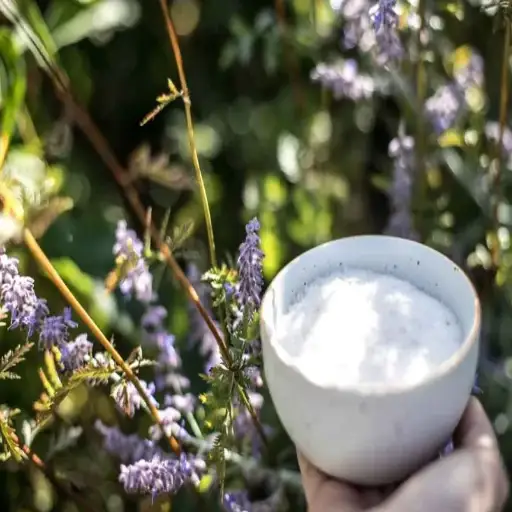Gardening enthusiasts and plant care experts are always on the lookout for simple, affordable, and effective solutions to keep their plants thriving. Two household staples, baking soda and Epsom salt, have gained attention for their potential benefits in plant care. But how exactly do these common items work, and what specific advantages might they offer for your garden? This article dives into the science and practical applications of using baking soda and Epsom salt for plants, exploring their potential to improve plant health, deter pests, and enhance soil quality. Whether you’re a seasoned gardener or just starting, understanding these natural remedies could transform the way you care for your greenery.
Understanding Baking Soda in the Garden
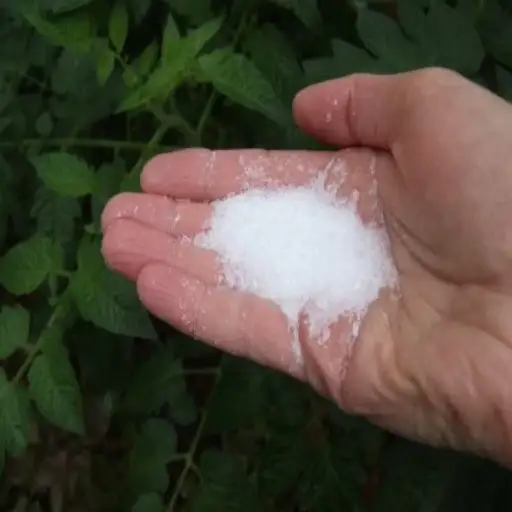
What is Baking Soda?
Baking soda, or sodium bicarbonate (NaHCO₃), is a natural compound that is generally synthetically produced via chemical processes that include soda ash (sodium carbonate). It is encountered as a white crystalline powder with a mildly alkaline pH, possessing multitudinous industrial and household applications. Its alkalinity renders baking soda interesting in the garden, since the pH of the soil might be altered, bringing about possible consequences to the health of the plants in some particular instances.
Being used in the garden for curing fungi is one of the applications of baking soda. The soda creates an alkaline condition that suppresses the growth of fungal pathogens that can flourish in acidic conditions, powdery mildew being one of them. Usually, a baking soda spray is made by dissolving baking soda in water possibly with a small quantity of soap. This solution is sprayed on plant leaves to inhibit the growth and spread of fungi. Usage must be careful and limited to avoid alteration to soil pH that can, in turn, damage plants in the long run.
Other times, baking soda might also be put to deterrent use against pests. Though it is not known to kill pests, it may avoid ants if sprinkled in spots around the garden. It is also used as a cleaning agent for garden utensils and containers to clean them from grime and lessen the risk of cross-contamination. Baking soda is natural and commonly available and yet should never be referred to as applicable for everything; if well used, certain situations are needed that suit the needs of the individual plant and accommodate the environmental conditions.
Benefits of Baking Soda for Plants
Baking soda, or especially sodium bicarbonate, can provide different benefits if applied properly to gardening. Especially it modifies the pH level depending upon cases, so it can be used to fight fungal diseases like powdery mildew on roses, cucumbers, and squashes. Applied as a mixture of baking soda and water sprayed on leaves, sometimes with the addition of a spreader-sticker like mild soap, it will create a surface that impedes fungal growth without hurting the plant.
Second, the powder is a natural deodorizer and pest deterrent in some cases. Though it is not an insecticide, small pests like ants can be kept away by sprinkling it around the base of the plants and in crevices in the garden by disrupting their trails. However limited are the baking soda pest-control committee’s powers, it is a natural option for satisfying minor garden annoyances.
Lastly, baking soda can be used to clean tools and garden equipment. It gets rid of dirt, grime, and even possible pathogens from surfaces with a high degree of efficiency, thereby averting the spread of diseases from one plant to the other. Though very versatile, a proper way of using less must be taken to avoid any chemical amending or damage to plants. Always test in small areas first before applying widely in order to maintain the garden’s health.
How to Use Baking Soda in the Garden
In the garden, baking soda has plentiful possibilities for use. One of the more famous uses is as a fungicide for powdery mildew and other fungal diseases that affect plants such as cucumber, tomato, and rose. Dissolve one tablespoon of baking soda into a gallon of water and spray the solution on the affected foliage, ensuring even coverage. This should be done during cool, dry conditions to avoid damage to the leaves.
Baking soda can also be used for pest control, being spread in small amounts around the bases of plants to discourage ants, slugs, and other pests that are gentle to the plants. Direct application to leaves or flowers is discouraged, however, because repeated usage in excessive quantities may alter the pH of the soil.
And the last function of baking soda is to clean the garden. Scrubbing tools and surfaces using baking soda paste can remove dirt and grime from shovels, pruners, and pots, thus lessening the likelihood of disease transmission amongst plants. Rinse thoroughly afterward so as not to leave residues. When combined thoughtfully and strategically, baking soda can help make for a safe and handy product in your gardening arsenal.
Epsom Salt: An Essential for Plant Health
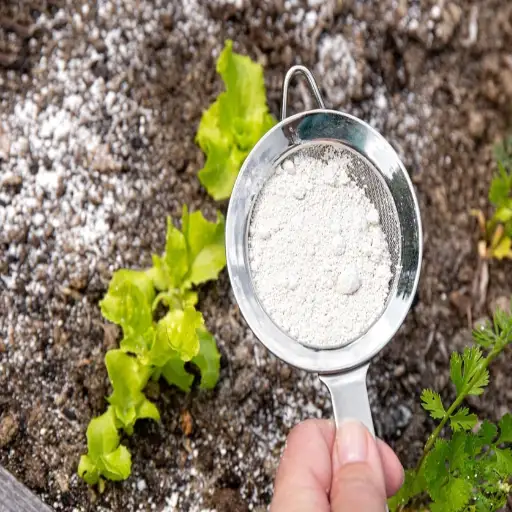
What is Epsom Salt?
Epsom salt, chemically known as magnesium sulfate, is a naturally occurring mineral composed of magnesium, sulfur, and oxygen. Owing to the presence of such minerals, Epsom salts find horticultural uses such as improving soil health and encouraging plant growth. Classified as sodium chloride under the common table salt, it is not hazardous but beneficial under recommended conditions for most plants. Its crystal structure causes it to dissolve in water rapidly, making it preferable to be used as a foliar spray or as a soil-mix amendment.
Magnesium, being an essential part of chlorophyll, is one of the requirements for photosynthesis in plants. Whenever soil cannot offer enough magnesium to plants, they start to show symptoms such as leaf yellowing and disturbance in growth, the sickness from when it is unable to perform the chlorophyll function properly. Epsom salt is one quick remedy for magnesium deficiency, especially in crops such as tomatoes, peppers, and roses, which have relatively higher demands for magnesium. On the other hand, sulfur is involved in plant development from the synthesis of amino acids, proteins, and enzymes.
According to recent studies in agriculture and application in gardens, management established the fact that Epsom salt alters nutrient availability by means of improvement of soil permeability. Together with balanced fertilization, it can encourage root growth, flowering, and yield. Oppositely, if magnesium is ensured at an excess level due to the random use of Epsom salt, the balance of other principal nutrients, calcium, and potassium in the soil is disturbed. Thus, one should be well acquainted with soil deficits along with the application rate of Epsom salt for the advantages, not to avoid a catastrophe.
Benefits of Epsom Salt for Plants
- Increased Magnesium Levels in the Soil: Magnesium, being a principal constituent of Epsom salt, is critical for chlorophyll production and thus for photosynthesis. Plants having magnesium in sufficient quantities show enhanced photosynthesis and energy generation, which translates into growth vigor.
- Enhanced Nutrient Uptake: Epsom salts help plants take up other essential nutrients like phosphorus and nitrogen. Studies tell us that magnesium assists in making phosphorus mobile, an element crucial for root development and flowering.
- Reducing Leaf Yellowing: Magnesium deficiency is said to bring about chlorosis characterized by yellow leaves due to restricted chlorophyll formation. Application of Epsom salts has been found to correct such deficiencies, hence restoring the leaf color and vigor.
- Improved Flowering and Fruit Development: Sulfur of Epsom salt fosters protein synthesis and enzyme activity in plants, fostering good flowering and fruit development. Data shows sulfur-deficient plants usually have poor yields, accompanied by poorly developed flowers.
- Deterring Pests and Stabilization of Soil pH: When applied to the surface soil, Epsom salts act as a deterrent to pests like slugs and snails. Also, because Epsom salts have a neutral pH, they could aid in maintaining soil equilibrium by preventing drastic pH shifts that threaten nutrient availability.
How to Use Epsom Salt in Gardening
- Soil Enrichment Application: Before planting, gardeners will use Epsom salt for amending soil magnesium and sulfur levels. To use it as a soil amendment, spread 1 to 2 tablespoons of Epsom salt per square foot over the garden bed. The fertilizer should be applied liberally for plants that love magnesium such as tomatoes, peppers, and roses.
- Foliar Feeding: Applying Epsom salt to foliage improves plants’ nutrient uptake while also rectifying visible deficiencies. Dissolve 2 tablespoons of Epsom salt in one gallon of water, and spray the solution on leaves in the early morning or late afternoon to avoid evaporation. This treatment is especially good for magnesium deficiency, which is characterized by yellowing in leaves with green veins. To keep at bay, repeat every two weeks.
- Improving Seed Germination: Epsom salt application during seed sowing aids faster germination by strengthening early root growth. It can be sprinkled lightly on the surface after sowing or mixed with the planting medium at the rate of 1 tablespoon per gallon of soil.
- Improving Flowering and Fruit Production: During flowering and fruiting, Epsom salt provides vital nutrients required for energy transfer and development. Apply 1 tablespoon of Epsom salt dissolved in one gallon of water at the base of plants once every 3-4 weeks. This allows direct absorption of magnesium and sulfur right into the root zone.
- Pest Control: Epsom salt acts as a non-toxic repellent to slugs and snails. Lay thin lines of salt around plants at risk to keep these pests away without harming the environment.
- Houseplant Care: In the case of houseplants needing the extra nutrient treatment, dissolve 1 teaspoon of Epsom salt in half a pint of water to be used to water the plants one time a month. This will promote healthy foliage and balanced growth of potted plants.
Four detailed uses of Epsom salt will enhance soil quality, capitalize on plant health, and higher yields, and empower sustainable growth.
Combining Baking Soda and Epsom Salt
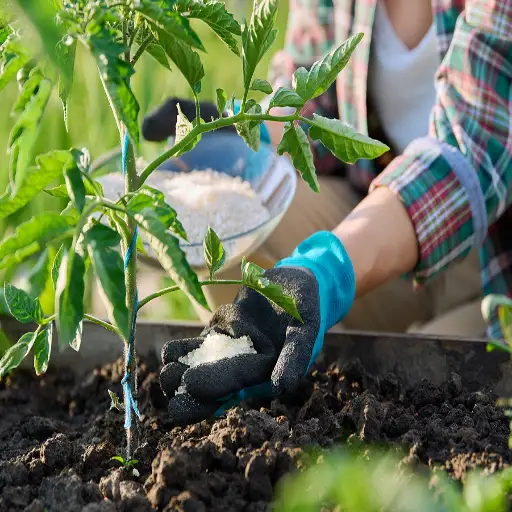
Benefits of Using Baking Soda and Epsom Salt Together
The mixture of baking soda and Epsom salt can be a very potent combination to work on plant health and soil quality.
- Enhanced Soil Structure: Epsom salt combined with baking soda aids in the balancing of soil pH and improving soil aeration. Being alkaline, baking soda counteracts excessively acidic soils and helps establish conditions favorable for root growth and nutrient absorption. Furthermore, studies have stated plant growth is uniform whenever soil pH is maintained within the defined optimum pH range (5.5-7.0, depending on the plant).
- Increased Magnesium and Sulfur Availability: Magnesium sulfate (Epsom salt) is indeed the beneficial magnesium and sulfur source needed by plants for photosynthesis and enzyme activity. And baking soda in combination with Epsom salt increases the bioavailability of these nutrients in the soil, ensuring their maximum uptake by the plants, which in turn promotes greener and healthier foliage.
- Natural Pest Control: Baking soda acts as a mild fungicide and will also dissuade pests like aphids or powdery mildew from settling. While Epsom salt discourages slugs and snails by its abrasive nature, thus together they provide eco-friendly, inexpensive, and plant-friendly pest control.
- Reducing Root Rot Risk: Wet soils can support the sudden spread of fungal diseases and thus root rots. Baking soda has antifungal properties, preventing the action of those grossly harmful organisms, while Epsom salts act to improve the situation of compacted soils so that excess water is drained away quickly from such soils, thus protecting the roots from decay.
- Improving Flowering and Fruiting: It is highlighted by researchers that magnesium, as contained in Epsom salts, sends a key message on flowering and fruiting improvements. This is further enhanced by baking soda’s enriching effect on soil health, thereby fostering the metabolic processes that encourage bright flowers and increased fruit production.
Understanding these benefits enables gardeners and soil scientists to apply natural formulations toward developing healthier pest-resistant plants and towards long-term soil sustainability.
Recipes for Making Your Plant Solutions
Making your plant solutions is inexpensive and eco-friendly, allowing full spectrum customization for your plant requirements. Here I will go through some detailed solution recipes that improve plant health, growth, and protection against pests.
- Epsom Salt Solution for Magnesium Deficiency: Mineral salts of magnesium sulfate from Epsom salts serve as a treatment for magnesium deficiency in plants, whose symptoms can be expressed in yellow leaves and stunted growth. Dissolve 1 tablespoon of Epsom salt in 1 gallon of water to prepare this solution. Pour the mixture onto the soil area surrounding the base of your plants or spray a fine mist onto leaves for rapid absorption. This process will do well to be repeated every four weeks during the growing season for optimum results.
- Baking Soda Spray Against Fungi: Baking soda prevents fungal infections and can act against common plant diseases, such as powdery mildew, both as a cure and a preventive. To prepare the spray, mix 1 teaspoon of baking soda in 1 quart of water. Add a few drops of dish soap to encourage the solution to stick to plant surfaces. Shake well before spraying the solution evenly on the leaves. Repeat application every 7 to 10 days or after heavy rainfall.
- General Fertilizer Blend: To provide fertilizer suitable for a greater portion of plants, mix in equal amounts of used coffee grounds and crushed eggshells. The grounds will provide nitrogen for healthy, green growth, and the eggshells will give calcium for strong cell wall development. This mixture can be sprinkled straight into the soil or brewed into a stimulating cocktail by steeping with water for 24 hours before it’s applied.
I have personally noticed a marked improvement in plant health and a reduction in pests while keeping efficient sustainable methods employing renewable resources in the recipes. These preparations provide a broad-spectrum approach for many plants and can be tailored based on the specific factors of the plant and the environment. With consistent application, your plants will have an optimum rate of production while utilizing reduced commercial products in horticulture.
Application Tips for Optimal Results
Application details are therefore vital in enabling a nutrient solution’s use to yield its best results. The solution should be applied at one time between dawn and dusk for the reduction of evaporation and good absorption. Employ a nozzle that imparts a fine spray so that the solution is deposited evenly on foliage, raising the chances of stomatal uptake of nutrients through the leaf surface. Also, do not apply a solution if there is an immediate risk of rain, as this may greatly dilute the solution while runoff can carry it away, reducing its efficacy.
For soil application, moderately watering the plant before application of the nutrient tea is recommended. This ensures that the soil is moist enough to allow the penetration of the solution alongside its absorption by the root system. Plant response to the treatment has to be observed systematically every day; it is very important to verify that there has been an improvement in leaf color, vigor, and rate of growth. The application should be repeated every two to four weeks, depending on the plant or growing conditions, with adjunct seasonal adjustment for best results.
Thus, by faithfully observing the strict standards for application, one will bring out the maximum efficacy contained in the solutions to nurture the plants against several stresses, and care for sustainable development, hence cutting down on the use of synthetic chemicals.
Addressing Common Gardening Challenges
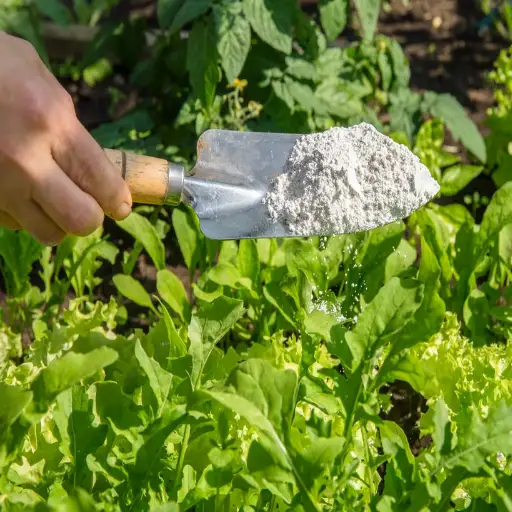
Using Baking Soda and Epsom Salt for Yellowing Leaves
Yellowing leaves are one of the most common challenges confronted by gardeners that result from nutrient deficiency, pest attack, or fungal infection. Baking soda and Epsom salt, two substances readily available in any household, could be applied as remedies if utilized correctly. Baking soda, or sodium bicarbonate, is a natural antifungal substance against mild fungal diseases like powdery mildew, which can sometimes cause discoloration of the leaves. With another result, Epsom salt, basically magnesium sulfate, treats the deficiency of magnesium, usually the cause of chlorosis or yellowing, in plants like tomatoes, peppers, and roses. When used in combination, these two compounds can work as a complete remedy for yellowing and dying leaves, together with direct benefits to the plant and the surrounding soil ecosystem.
To prepare a baking soda spray, take 1 teaspoon of baking soda and dissolve it in 1 quart of water; next, add a few drops of liquid soap to act as a surfactant, which will help the solution stick to the leaves. Spray this mixture directly onto the affected foliage every 7 to 10 days, preferably during early morning or late evening to avoid any risk of leaf burn due to exposure to sunlight. Meanwhile, Epsom salt can be administered as a foliar spray or mixed into the soil. Dissolve 1 tablespoon of Epsom salt into 1 gallon of water for foliar application and spray this solution onto the leaves, or apply 1 tablespoon of Epsom salt per plant around the soil surface and water when using the soil method. This technique should work against the distraction of fungus and nutritional imbalances to bring health and vitality in plants.
Though remedies, using them excessively can affect the soil pH and salinity and thereby hamper plant growth; hence, overuse should be avoided in the course of treatment. However, before applying these solutions, it is necessary to find the actual cause of leaf yellowing by interviewing the plant for pest signs, assessing soil nutrient levels, and measuring the environmental settings. If a gardener applies these prescribed remedies to the letter, signs of healthy, verdant foliage will return to their garden, thus promoting the idea of sustainable gardening.
Enhancing Flowering with Epsom Salt
Commonly known as Epsom salt, magnesium sulfate (MgSO₄) is considered beneficial for plants’ vigor and bright flowering. Magnesium being a core component of chlorophyll is critical for photosynthesis and exerts direct effects on the production of energy in a plant. Sulfate aids in making amino acids and enzymes necessary for vigorous growth. Epsom salt application cures certain nutrient restrictions if the soil is deficient in magnesium and therefore promotes the flowering process.
For fostering better flowering with Epsom salt, a gardener can either prepare a foliar spray or work it into the soil. Foliar treatment consists of 1 tablespoon of Epsom salt to 1 gallon of water, ensuring the solution is well applied to the leaf surface for magnesium uptake. Soil application involves 1 to 2 tablespoons mixed into the soil around the plant base every week for nutrient supply at the root level during the growing season.
The most responsive to Epsom salt applications are roses, peppers, and tomatoes, as these have, in return, seen better flower and fruit production. Bearing in mind that protecting against overdose is particularly important, an excess of magnesium in the soil can upset the equilibrium between other vital nutrients such as calcium and potassium. The soil test will help to accurately diagnose and avoid unwanted nutrient imbalances. By including Epsom salt in the fertilizer program, one can promote optimum flowering while at the same time keeping the soil in a healthy, nutritious shape.
Pest Control with Baking Soda Solutions
Baking soda, once more common in households, offers solutions that are relatively inexpensive yet safe for the environment when dealing with some pest infestations in the gardens. Also used in fungus-repelling and insect-repelling pesticides, baking soda may find its place in integrated pest management strategies. Studies have shown that baking soda affects the cellular structure of fungal organisms like powdery mildew, preventing their reproduction and distribution. When applied on the surface of plants dissolved with some water and a little biodegradable soap, it produces a sort of physical barrier acting as a repellent for such pests as aphids and mites.
Alternatively, mix one teaspoon of baking soda with one quart of water, and add a few drops of mild dish soap for better adhesion. Spray this solution liberally on the affected plants early in the morning or late afternoon to prevent the burning of leaves. Also, check frequently and perform small tests to ensure no damage occurs to sensitive species.
Aside from being helpful, this should never be the only method used in protection against pests but rather integrated into a bigger plan that includes encouraging their natural enemies, spacing plants adequately, and maintaining good air circulation. This reduces dependence on any one method and helps nurture a balanced garden ecosystem.
Precautions and Considerations
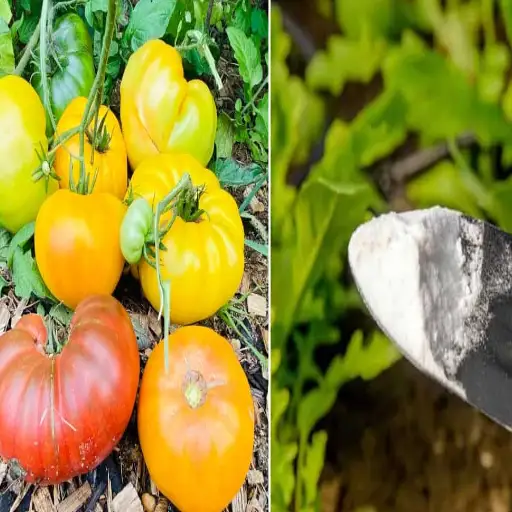
Overuse Risks of Baking Soda and Epsom Salt
Baking soda is a great remedy for some gardening problems, yet it is used with caution, as too much baking soda may affect the pH balance of the soil and cause an imbalance in the plant growth and nutrient absorption. The alkalinity of baking soda can raise the pH of the soil, which will be less inviting for plants that have a preference for acidic-type soil. This change can lead to nutrient lock-out, wherein elements such as iron, manganese, or phosphorus become less available to plants, thus affecting their health and productivity.
Too much Epsom salt can cause magnesium buildup in the soil, as Epsom salt’s major constituents are magnesium and sulfate. A disproportionately large amount of magnesium in soil can create an imbalance so severe that it will disturb the uptake of calcium and potassium, which are indispensable to proper plant growth. In the long run, such an imbalance will result in terribly floated plants, poorly flowering, and stunted growth. Further, an excess amount of magnesium in the soil can give rise to water runoff, which can be another source of pollution if it finds its way through groundwater into the nearby ecosystem.
To prevent these problems, baking soda and Epsom salt must be applied in moderation, strictly depending on soil tests and plant requirements. The application of these products is supposed to be supplemental, not a cure-all for plant care, so as not to create long-term unwanted results in infinity.
Signs of Nutrient Imbalance in Plants
Plant nutrient imbalances give rise to a spectrum of physiological and morphological symptoms observed in the plant due to certain deficits or an excess of essential elements. For example, common causes of nitrogen deficiency include chlorosis mostly of the older leaves since the plant decides to relocate nitrogen to the newer growth. Excess nitrogen may cause dark green leaves, delayed flowering, and pest predisposition.
In the case of phosphorus deficiency, inhibited growth occurs along with leaf darkening and purple discoloration owing to a lack of energy transfer in the plant. Potassium deficiency more often causes necrotic spots and edge burns; it lowers the plant’s resistance against stress, while calcium deficiency causes blossom-end rot in fruit-bearing plants with new growth distortion since a lack of calcium impacts cell wall formation. Micronutrient imbalances are less obvious but equally cruel; for instance, iron deficiency results in interveinal chlorosis of younger leaves, while boron deficiency manifests as brittle or hollow stems. On the other hand, toxicity due to excessive application of trace elements may occur, as in the case of manganese toxicity, where crinkling and distortion of leaf tissues accompanied by brown spots are seen.
Soil and tissue tests need to be performed for a thorough and precise diagnosis of nutrient imbalances, as factors in the environment of a location, such as pH, moisture levels in the soil, and composition of the soil itself, are major contributors to the availability of nutrients. This information allows an actionable solution geared toward addressing the problem at hand instead of relying on generalized fertilizers, which may further complicate the issue.
Best Practices for Safe Application
- Conduct Comprehensive Pre-Application Testing: Both soil and plant tissue analyses should be conducted to evaluate nutrient levels and define deficiencies or toxicities. This also defines applications; the type and quantity of fertilizers or soil amendments must be precise, in order to reduce environmental impact and crop damage.
- Calibrate Equipment Regularly: Equipment used for application, such as a sprayer or spreader, should be calibrated to apply such inputs evenly. Uneven distribution may cause overapplication that will bring about local toxicity or runoff of nutrients, or underapplication that will not adequately treat the deficiencies.
- Observe the Manufacturer’s Instructions: Regarding the specific application rates recommended by the manufacturer, in terms of timing and method, the application must follow those recommendations. Exceeding such guidelines will create damage to the plants, and its efficiency will lessen in terms of ecological aftermath, which includes ecologically contaminating nearby water bodies.
- Record Environmental Conditions: Setbacks are conditions of application when high winds arise, heavy rainfall prevails, or extreme temperatures are felt. They cause runoff, volatilization, and reduction in nutrient uptake efficiency while creating the likelihood of these events. Hence, waste and environmental impact can be constrained if conditions are made to be favorable.
- Adopt Site-Specific Management: Know that soil and its composition, crop identity, and previous treatments greatly change circumstances for nutrient requirements. Thus, the application of fertilizers or amendments based on field data will yield optimal results in the use of excessive input.
- Set Up Buffer Zones: Vegetative buffer zones can be established near waterways to further reduce nutrient runoff. These zones serve as natural filters to capture excessive nutrients before they enter aquatic environments and thus protect water quality.
Those guidelines are followed by the practitioners for better nutrient management while considering the sustainability of agricultural productivity, along with adverse environmental effects.
References
Frequently Asked Questions (FAQ)
Q: How do baking soda and Epsom salt benefit plants?
A: Baking soda and Epsom salt can be beneficial for plants by providing essential nutrients. Baking soda, or sodium bicarbonate, helps to control fungal issues like powdery mildew, while Epsom salt, rich in magnesium sulfate, promotes nutrient uptake and enhances photosynthesis.
Q: What is the recommended ratio of baking soda and Epsom salt for plants?
A: A common mixture is to use 1 tablespoon of baking soda and 1 tablespoon of Epsom salt mixed in 1 gallon of water. This solution can be used to feed your plants and improve the health of the soil.
Q: Can using baking soda and Epsom salt improve soil pH?
A: Yes, using baking soda can raise the pH of acidic soils, while Epsom salt provides magnesium, which is vital for plant health. Always do a soil test to determine the current pH level and nutrient availability before applying.
Q: What plants benefit most from Epsom salt and baking soda?
A: Tomato plants and geraniums often thrive with the addition of Epsom salt and baking soda. These plants prefer a balanced nutrient supply, which these amendments can provide.
Q: How often should I apply Epsom salt and baking soda to my plants?
A: It is recommended to apply Epsom salt and baking soda sparingly, about once a month during the growing season, to avoid over-fertilization and keep the soil healthy.
Q: Can I make my plant fertilizer using baking soda and Epsom salt?
A: Yes, you can make your plant fertilizer by mixing Epsom salt and baking soda with water. This homemade solution can provide essential nutrients like magnesium and sodium, promoting healthy plant growth.
Q: Is it safe to sprinkle baking soda directly on plants?
A: Sprinkling baking soda directly on plants can be safe in moderation, but it’s recommended to mix it with water first. This helps to prevent any potential salt buildup that could harm the plants.
Q: What are the signs that my plants need Epsom salt?
A: Signs that plants may need Epsom salt include yellowing leaves, poor growth, and issues like blossom end rot in tomatoes. These symptoms often indicate a magnesium deficiency, which Epsom salt can help correct.
Q: Can Epsom salt and baking soda help with pest control?
A: While Epsom salt and baking soda primarily provide nutrients, they can also help control fungal pests when used in a spray solution. The combination can deter pests without harmful chemicals, promoting healthier plants.
Q: Should I use Epsom salt in alkaline soil?
A: Using Epsom salt in alkaline soil can still be beneficial as it adds magnesium without significantly affecting the pH. However, it’s important to monitor the soil’s nutrient balance and always conduct a soil test for the best results.

